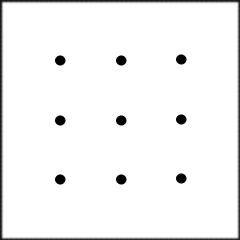It has been a little over 2 months since I moved to Napa, California. Coming here was one of the hardest decisions I have ever had to make. I had spend my entire career at one school, New Tech Academy @ Wayne High School. I was a teacher, a coach, a part of the community. In leaving, I knew that I was leaving my colleagues, my students, and my friends & family. However, I knew that in order to stretch my comfort level, I needed to experience education in a new community and Napa is where I landed. Since arriving here, I have noticed a couple things that make education here special:
1. Building Capacity
What is capacity? Lyle Kirtman provides an excellent framework for building capacity in leadership. He argues there are four steps in doing so.
- Leaders Examine Their Own Leadership Style
- Leaders Review the Leadership Profile of Their Team
- Leaders Commit to an On-Going Process
- Leaders Maintain a Positive Culture of Change Despite Barriers
There is a strong desire to build capacity in leadership here in Napa. The district has worked with Kirtman to examine leadership profiles, used Michael Fullan’s work to build foundations, used Instructional Rounds in Education to develop high-quality instruction, and set an example for transformational change in system’s practices.
2. Desire for Innovation
I personally feel I moved to Napa at just the right time. The district is in the midst of a transformational shift in instructional thinking practices. Through NVUSD 2015, there has been a drastic change in the mindset of what school looks like for ALL students in Napa Valley. By installing authentic project-based learning and 1:1 BYOD technology, ALL students have access to real-world educational experiences that will prepare them for college & career readiness. As well as this, through the NexTech project, there will be better alignment for students in their K through 12 experience.
3. Forward Thinking
In working with other educators in the community, there seems to be a collective feeling of “being in it together”. Each school faces their own challenges and need varying support, but there is a strong sense of forward thinking in building a collective vision for the entire district. I am reminded of Knowledge Works Katherine Prices’ recent work on the future of education. She argues that we could soon be finding ourselves living in one of two scenarios:
- A vibrant learning grid in which all of us who care about learning create a flexible and radically personalized learning ecosystem that meets the needs of all learners.
- A fractured landscape in which only those whose families have the time, money and resources to customize or supplement their learning journeys have access to learning that adapts to and meets their needs.
The education movement here in Napa is being challenged to create an education structure that fits that first scenario. A connected web in which all learners experiences are taken into account and personalized to best fit their own needs.
Even though moving away from Fort Wayne and my comfort zone was one of the hardest decisions of my life and career, being a part of a learning organization that builds capacity, strives for innovation, and is forward thinking makes me excited for what is next.


